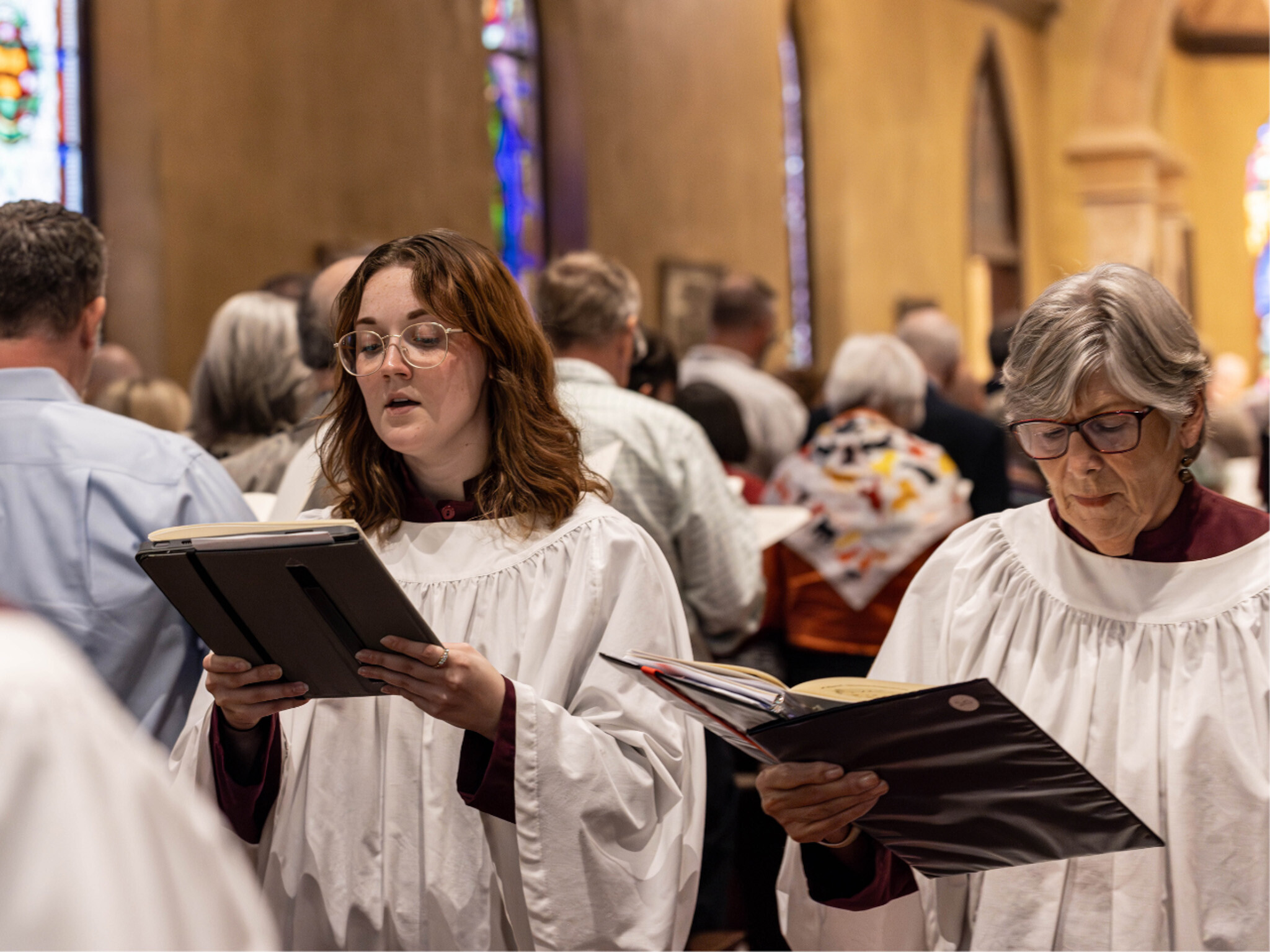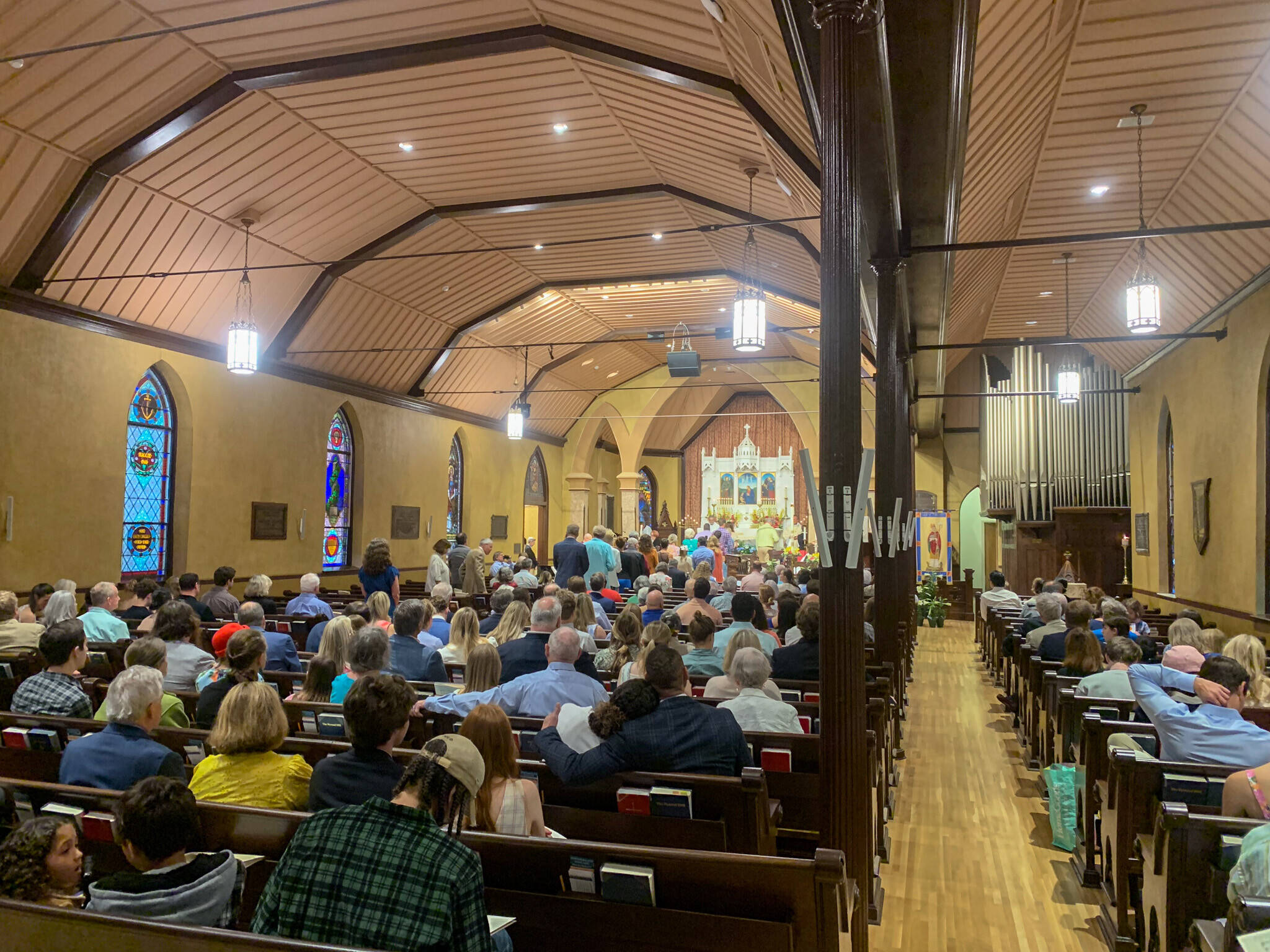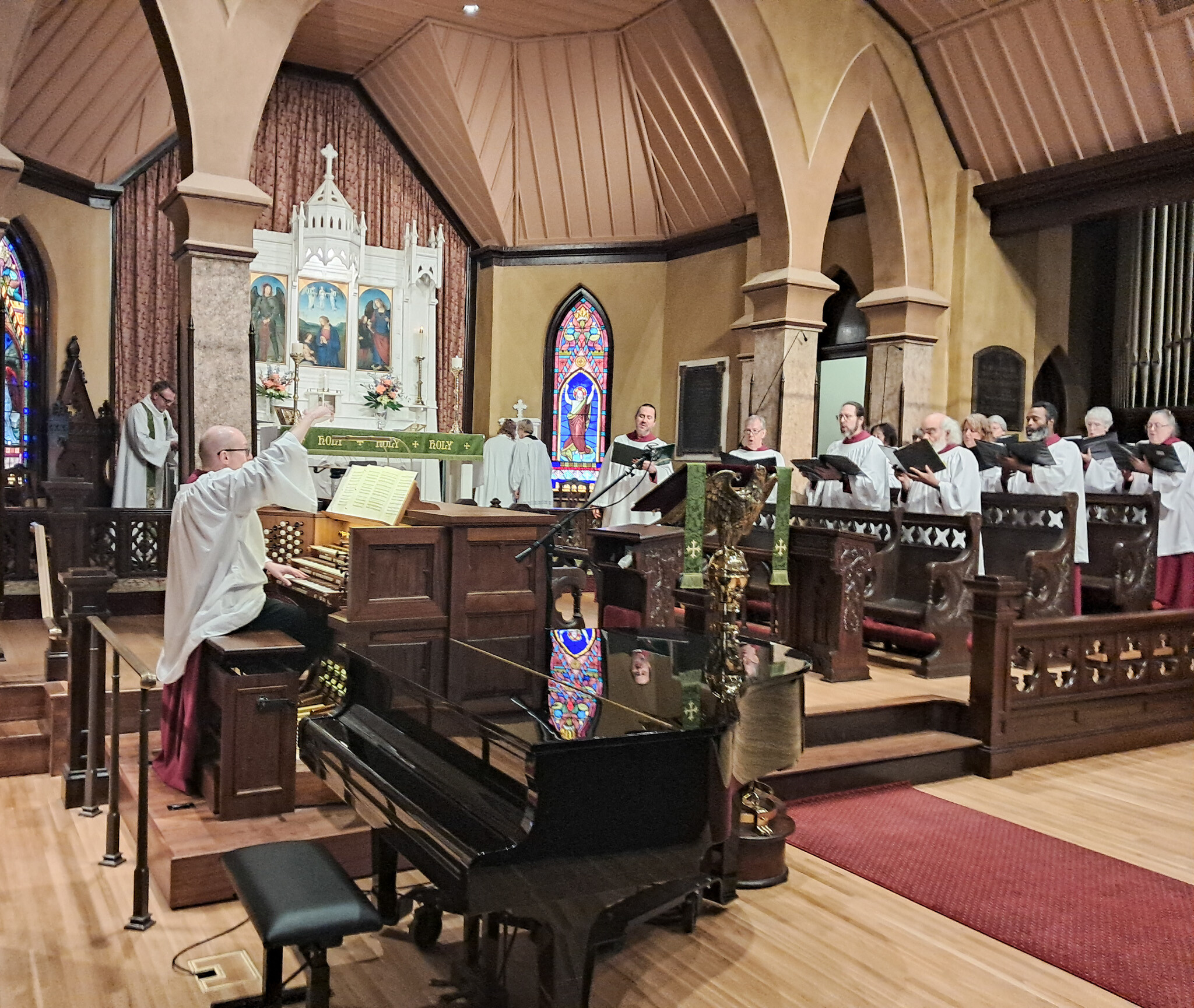
Trinity Sunday is sometimes called ‘the only feast that honors a doctrine’, but orthodox Christianity affirms that the Trinity is not just a doctrine, but rather a living reality, the very nature (or our best attempt to understand it) of the Godhead. The evocative Old Testament readings for the day celebrate Creation (Genesis 1 this year; Proverbs 8 this year; Genesis 1 in Year A) and the majesty of God (Isaiah 6); there is thus no shortage of suitable hymnody.
‘Holy holy, holy! Lord God Almighty!’, the best-known of Reginald Heber’s texts and one of the most popular of all Protestant hymns, is based on Revelation 4, where the thrice-holy appears as in Isaiah 6. The similar outer stanzas (a trait found in other hymns of Heber’s such as 117/118 and 258) end with a Trinitarian acclamation, while the inner stanzas end with other triads: ‘which wert, and art, and evermore shalt be’; ‘perfect in power, in love, and purity’. Heber, a parish priest and then briefly Bishop of Kolkata before his death, helped establish hymn-singing in the Church of England with his 1826 collection, written when the congregational singing of anything but psalm-paraphrases was not officially sanctioned. The tune, called ‘Nicaea’ after the location of the Council that worked out the Trinitarian doctrine 1,700 years ago this year, was written for this text in 1860. Its opening notes, forming a major triad, may symbolize the Trinity.
Gloria in excelsis (or another canticle of praise) is appointed throughout Christmastide and Easter Week, and on Sundays and Ascension Day in Eastertide, and may be sung at other times outside Advent and Lent. Before this item takes a summer break, we take the opportunity to sing the most logical alternative, the Te Deum laudamus [BCP 52 & 95], like the Gloria a very early Christian hymn, and also like it, historically associated with Morning Prayer. The Te Deum is not primarily a Trinitarian text, but its exalted language – including, once again, the thrice-holy – is appropriate for the occasion, and the last stanza of the hymn-paraphrase which we sing, ‘Holy God, we praise thy Name’ [366], is fully Trinitarian. The hymn is set to a German Catholic tune associated with a German Te Deum paraphrase, ‘Grosser Gott, wir loben dich’.
Last week we sang a paraphrase of ‘Veni creator spiritus’, the great hymn to the Holy Spirit. Because this Sunday’s Gospel consists of a final promise of the coming Spirit from the Farewell Discourse in John’s Gospel, we sing another, not dissimilar, Holy Spirit hymn, ‘Come, gracious Spirit, heavenly Dove’ [512], which we have set to the simple version of the ‘Veni creator’ tune [501].
Our Communion anthem, the work of Hildegard of Bingen, likewise praises the Trinity:
Praise to the Trinity, who is Sound and Life and the Creatress of all things in themselves in life,
and who is the praise of the angelic host, and the wondrous splendor of mysteries unknown to mortals, and who is Life in all things.
Hildegard was a 12th-century German abbess, writer, composer, philosopher, and mystic. This stunningly brilliant woman left us with one of the largest bodies of music known to be written by a single composer in the medieval period; this œuvre is all the more remarkable for setting texts also written by the composer. It is most fitting to celebrate this particular feast with one of her strikingly visionary works.





Login To Leave Comment